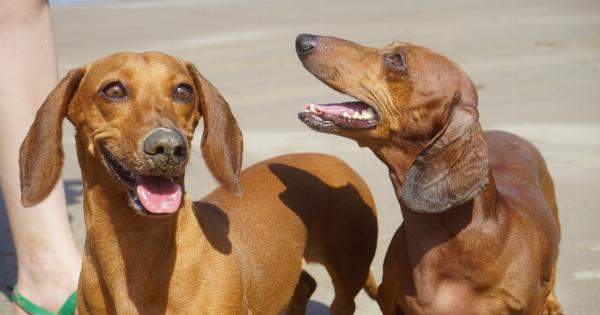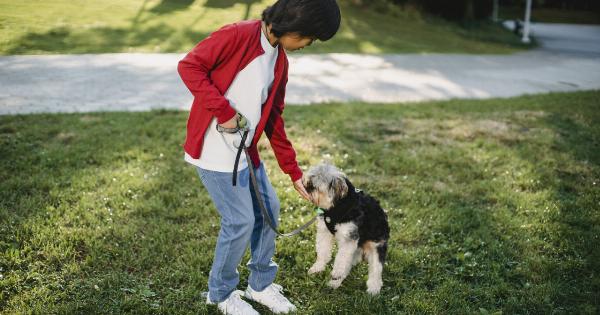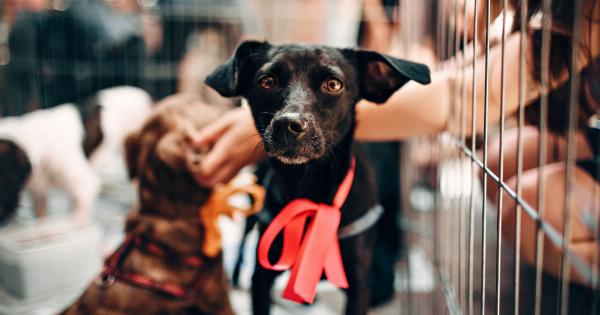As summer temperatures rise, it’s important to take extra precautions to keep our furry friends safe and protected from the dangers of heatstroke.
Heatstroke can be a life-threatening condition for pets and can occur quickly, especially in hot and humid climates. To ensure the well-being of our beloved companions, it’s crucial to understand the signs of heatstroke and how to prevent it. This article provides valuable information on protecting your furry friends from heatstroke.
Understanding Heatstroke in Pets
Heatstroke, also known as hyperthermia, occurs when an animal’s body temperature rises too high and exceeds their ability to regulate it. Unlike humans, dogs and cats do not sweat as efficiently, which makes them more susceptible to overheating.
This can lead to severe complications, including organ failure, brain damage, and even death.
Some common causes of heatstroke in pets include:.
- Leaving pets in a hot car
- Exercising in extreme heat
- Insufficient shade and water
- Being confined to an area without proper ventilation
Recognizing the Signs of Heatstroke
It’s essential for pet owners to be able to recognize the signs of heatstroke in order to take immediate action. Some common symptoms include:.
- Panting excessively
- Difficulty breathing
- Increased heart rate
- Drooling or excessive salivation
- Weakness or collapse
- Vomiting or diarrhea
- Gums and tongue turning bright red or purple
- Seizures or tremors
If you notice any of these signs, it is crucial to act quickly and provide your pet with immediate care.
Preventing Heatstroke
Prevention is key when it comes to protecting our furry friends from heatstroke. Here are some essential tips to help keep your pets cool and safe during hot weather:.
1. Provide Ample Shade and Water
Ensure that your pets have access to shade at all times, especially during the hottest parts of the day. Shade can provide relief from direct sunlight and help lower their body temperature.
Additionally, always make sure they have a constant supply of fresh, cool water to drink.
2. Avoid Exercising in Extreme Heat
Avoid exercising pets during the hottest hours of the day, particularly if they are prone to heat-related issues. Plan your walks or playtime for early mornings or evenings when the temperatures are lower.
3. Never Leave Your Pet in a Parked Car
Never leave your pet unattended in a parked car, even if the windows are cracked. The temperature inside a car can rise rapidly, even on relatively mild days. On a hot day, it can reach deadly levels within minutes.
4. Use Cooling Mats or Wet Towels
Offer your pets a cool place to lie down by using cooling mats or damp towels that they can lay on. These mats and towels can help bring down their body temperature and provide relief on hot days.
5. Take Breaks During Outdoor Activities
If you are outdoors with your pet, ensure that you take frequent breaks in shaded areas. This will allow them to rest and cool down before continuing any activities.
6. Groom Your Pet Regularly
Regular grooming can help prevent matting of fur, which can trap heat close to the body. For long-haired pets, consider trimming their fur to a shorter length during the summer months to help keep them cooler.
7. Consider Indoor Activities
If the temperatures are extremely high, consider engaging in indoor activities with your pet, such as playing games or teaching new tricks. This will prevent them from being exposed to excessive heat outdoors.
8. Provide Proper Ventilation
If your pet spends time in an outdoor enclosure or a designated area, ensure that it is well-ventilated and has proper air circulation. This will help prevent heat from becoming trapped in the area and keep it cooler.
9. Be Mindful of Breed and Age
Some dog breeds, such as bulldogs and pugs, are more prone to heatstroke due to their brachycephalic skulls. Additionally, older pets and those with pre-existing medical conditions are at a higher risk.
Take extra precautions and be attentive to their needs during hot weather.
10. Learn Pet First Aid
Lastly, it’s beneficial for all pet owners to learn basic pet first aid, including how to handle heatstroke emergencies. This knowledge can be invaluable in providing immediate care before professional help is available.
Conclusion
Protecting your furry friends from heatstroke should be a top priority during hot weather.
By understanding the signs of heatstroke, taking preventive measures, and being prepared for emergencies, you can help ensure the well-being and safety of your beloved pets. Remember, their lives depend on your vigilance and care.






























